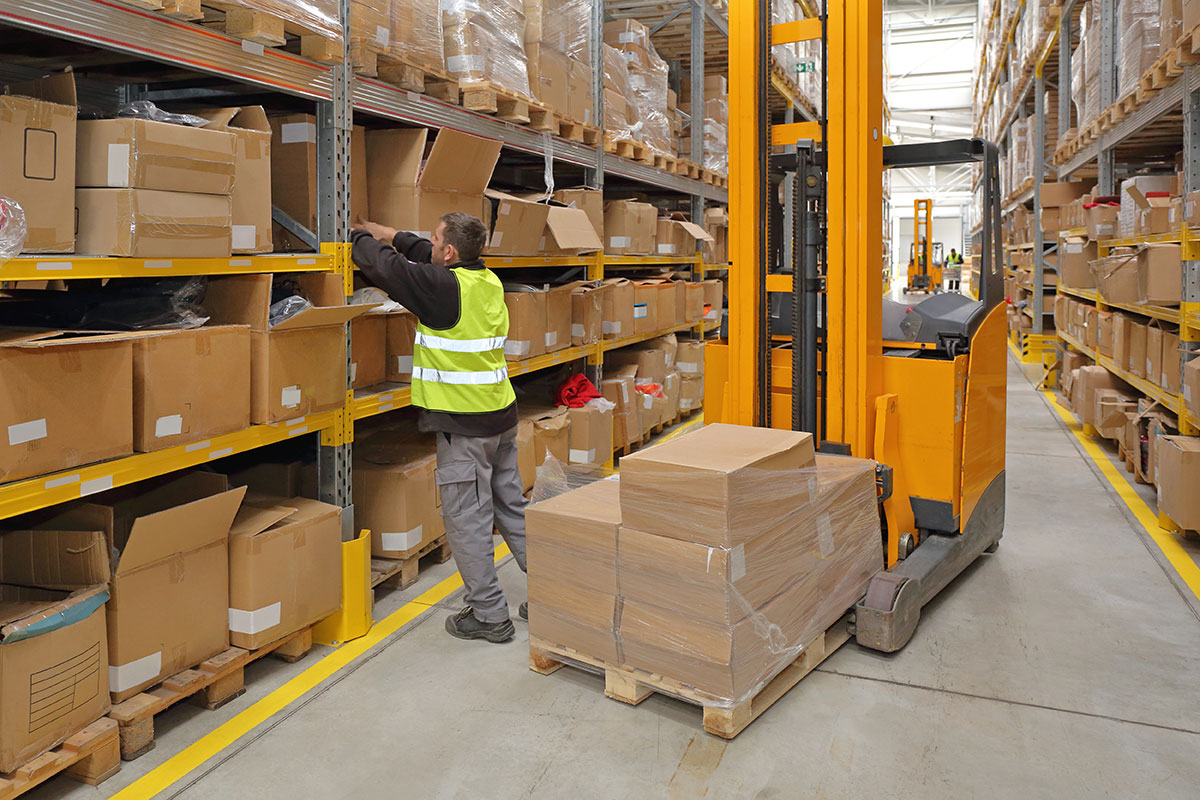B2B and B2C order fulfillment differ based on several factors including where orders come from, the outbound order profile, storage strategy and returns management. Businesses with multiple sales order channels often prefer not to mix order fulfillment-related activities to keep them running smoothly.
However, this isn’t always the most effective way to deal with multiple channels. Companies have to dedicate resources for maintaining different storage locations. Managing various distribution structures, more often than not, results in higher costs and losses due to unsold inventory.
With the expansion of the online retail marketplace, many third-party order fulfillment services and 3PLs have emerged which specialize in unifying multiple order channels. In simple words, what this means is that companies can easily complete the orders of both their B2B and B2C customers from the same warehouse.
In this post, we’ll take a look at this unified strategy to help you understand how a 3PL service can help you manage multiple sales order channels. Before we begin, let’s quickly cover some of the main differences between B2B and B2C order fulfillment.
Key Differences Between B2B Order Fulfillment and B2C Order Fulfillment
As an online business owner, developing an understanding of B2B and B2C order fulfillment is essential. It will give you a clear idea about why you need to build relationships with business partners and customers and how it affects the warehousing solution you choose.
Here’s a quick breakdown of the two order fulfillment approaches:
Pre-Purchase
-
B2B shipments involve bulk orders of mostly raw materials and subparts. B2C cargos include smaller products like frozen food, laptops or appliances.
-
B2B order fulfillment charge according to the unique needs of the client and prices are based on different factors like the order size and duration of working relationship. B2C service fees are the same for everyone.
-
B2B contracts are planned for longer durations and support is provided at different stages. For instance, construction companies need building equipment which requires regular maintenance. B2B consumers require little after-sales support. For instance, a laptop customer may ask for a replacement.
Purchase
-
Careful planning is required to draft a B2B contract, and both parties make an effort to keep personal feelings out of the deal. B2C purchases don’t require much preparation, and the buying decision involves personal preferences.
-
B2B companies negotiate deals with several suppliers based on their particular needs. B2C customers can choose which shop from which they’ll buy.
-
B2B shipments are bulky items that are ordered regularly. B2C purchases are generally lighter deliveries on a single transaction.
-
B2B companies buy raw materials on credit. B2C orders are paid for when the customer receives them.
Post-Purchase
-
B2B transactions require expensive, sophisticated handling and shipping systems. B2C shipments charge affordable or no shipping fees.
-
B2B contracts involve large-scale, recurring shipments, so business relationships are vital for both parties. B2C services focus on customer satisfaction since customers can buy products from any vendor in the market.
-
B2B shipments comprise of large order sizes, and their agreements describe obligations and processes for handling losses. Cargoes are insured to minimize the risk. B2C deals involve clear return and refund services possible in the retail marketplace.
Of course, managing B2B and B2C operations simultaneously raise some challenges, too. Specifically:
-
Storage. Warehouses handling B2B order fulfillment have to stock a large number of bulky items in pallet racks which may require specialized forklifts. Although B2C items are also stored in pallet shelves and bins, they can easily be located and picked up for packing.
-
Order size. B2B shipments are much larger in terms of total volume and the number of lines in a sales order as compared to B2C orders.
-
Delivery time and method. B2B order fulfillment involves large-scale items which may require specialized shipping and handling equipment over long distances. Therefore, minor delays are considered acceptable. In contrast, B2C orders are expected to be delivered as fast as possible, and delays can result in bad reviews and complaints from customers.
-
Shipping. B2B shipments are transported on company owned trucks or by outsourcing to a third-party logistics company. B2C orders are delivered to the end customers through a third-party order fulfillment service like Fulfillment by Amazon. Some companies have specialized warehouses for packing items individually which are then transported in bulk to the retail stores or a third-party shipping provider.
Now that you have a basic understanding of B2B and B2C order fulfillment let’s dive in further to see if it’s possible to run both operations simultaneously successfully.
Can You Enlist One 3PL to Manage Both B2B and B2C Orders?
Regardless of the challenges associated with both B2B and B2C order fulfillment, most 3PLs can cater to multiple sales channels under the same fulfillment umbrella. They achieve this by taking the requirements of each channel into account and putting storage, working staff, and equipment in place.
In other words, 3PLs have the resources to manage both B2B and B2C orders individually. However, managing both types of order fulfillment at the same time is complicated and requires precise planning and close-coordination between different departments. To achieve this, 3PLs do a lot of groundwork to ensure that everything runs smoothly.
To successfully combine both B2B and B2C operations under one fulfillment operation, 3PLs typically establish service level agreements (SLAs) at the start of every contract.
An SLA is a written agreement between the 3PL service and the B2B or B2C company that describes what level of services will be provided by the 3PL service. These services include timely deliveries, quantity and sizes of orders, storage, transport, collection, and receipt. It enables the 3PL service as well as the B2B or B2C company to monitor the performance of order fulfillment operations and hold each party accountable for their responsibilities.
Once a 3PL has established the services it’s expected to provide, it can begin coordinating order fulfillment activities and operations involving inventory, infrastructure and information.
How 3PLs Manage Both B2B and B2C Order Fulfillment
Here’s how third-party order fulfillment services are able to run both B2B and B2C operations simultaneously successfully.
Inventory
Although 3PLs cater to the needs of multiple sales channels, they store their inventory together as it allows them to shorten the time needed to transport the inventory across the distribution network.
In addition to keeping things together for distribution, customers can realize savings in inventory investment by having everything under one roof.
Conversely, if 3PLs establish separate storage locations for all their sales channels, they would have to arrange dedicated storage space for each channel. Doing so would require both locations to keep enough inventory to ensure they don’t run out of stock. Inventory upkeep at multiple locations might mean ending up with unsold items not to mention the increased costs incurred for implementing different operational processes and a separate warehousing management system (WMS) at each location.
By storing all their inventory together, 3PLs can minimize the required storage space, the working staff and the whole distribution network can be simplified for a specific geographical area.
3PLs leverage sales forecasts and past data to optimize their inventory management for both sales channels. This helps them predict when (and how much) of each item will be required at a specific location. Businesses using 3PL services will also benefit from providing updated sales orders to help replenish required products and transport them on time.
Infrastructure
By using a 3PL service, companies can fulfill orders from the same warehouse using a single WMS software. The inventory intended for multiple sales channels is stored separately within the same warehouse while the majority of the inventory sits in a bulk replenishment area. Doing so helps 3PL service providers quickly replenish items back on the shelf.
Whenever new orders come in, the staff at the 3PL company directs the movement of inventory items from both the storage locations to their respective destinations. A staff member does so by utilizing data from sales order forecasts and WMS software which helps 3PLs optimize their warehousing and distribution systems.
Using this system allows companies to stay flexible with changes in customer demand from multiple channels as well as maintain greater visibility in their geographic location. It also enables the 3PL service provider to easily track and execute order fulfillment operations using a single WMS software. This allows them to adapt to the needs of your business while cutting down on storage and transport costs.
Information
A 3PL service provider gives companies end-to-end supply chain visibility through a centralized system while managing their sales orders across multiple channels. By getting access to data from a single WMS software, businesses can track inventory in real-time, communicate sales orders and receive shipping information.
Doing so allows them to make informed decisions and optimize their workflow as well as keep their partners and customers in the loop.
Conclusion
Managing your B2B and B2C order fulfillment separately from different warehousing locations isn’t the best way to complete orders from multiple sales channels. By using a 3PL service, you’ll be able to reduce costs, track your orders and make better-informed decisions.








